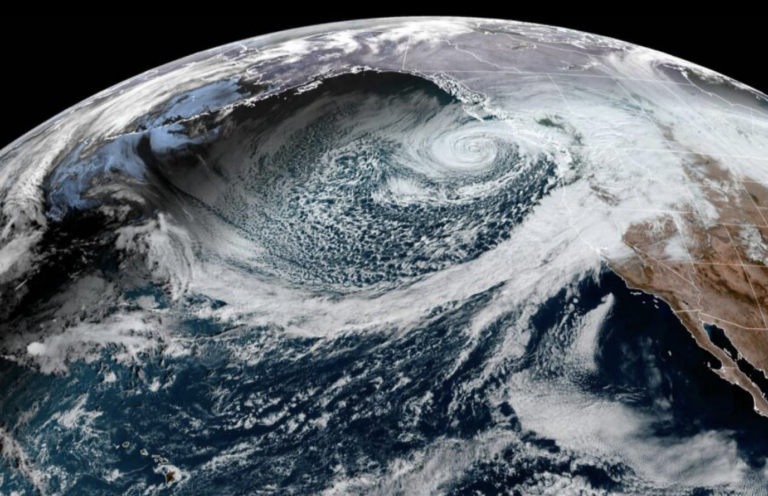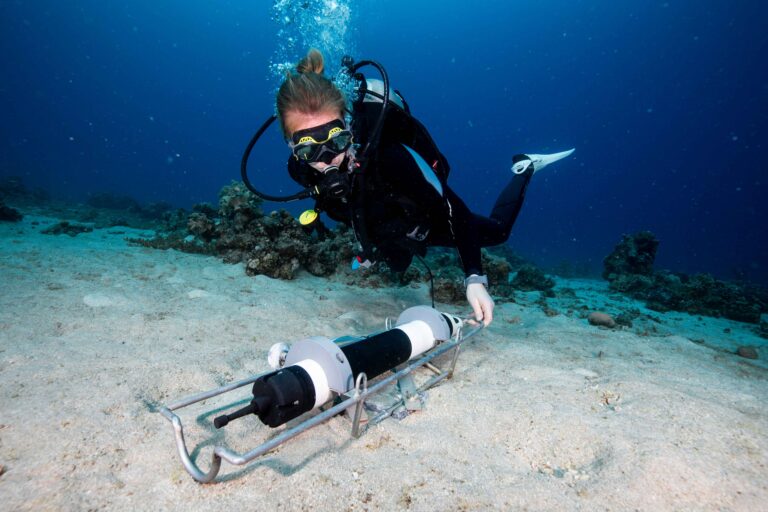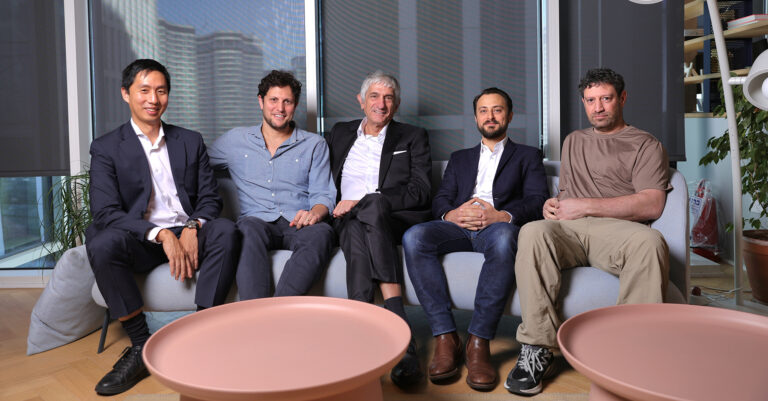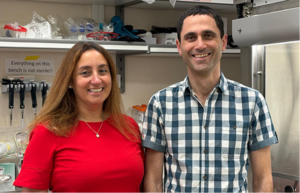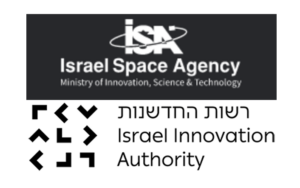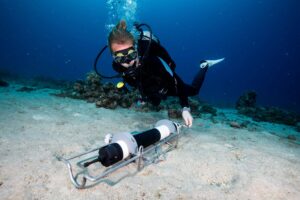Technion (Israël) : "un système de production d'eau à partir de l'air plus économe et efficace que WaterGen". Interview

[:fr]
Les chercheurs du Technion en Israël ont développé un nouveau système autonome qui produit de l’eau à partir de l’air, adapté aux zones désertiques. Le système LDS-AMH permettra l’approvisionnement continu en eau de petites collectivités isolées, sans avoir besoin de transporter l’eau sur de longues distances.
Cette nouvelle technologie se déroule en deux étapes : séparer la vapeur d’eau de l’air en la déshydratant grâce à une solution saline hautement concentrée qui absorbe la vapeur d’eau ; puis on la sépare de la solution sous une pression négative. Selon le Pr Broday : « L’un des avantages du LDS-AMH est son efficacité énergétique. Notre technologie fait de l’eau une ressource abordable, car elle permet de produire de l’eau partout dans le monde, indépendamment des sources existantes. Notre prototype fonctionne et nous espérons le commercialiser dans un proche avenir.«
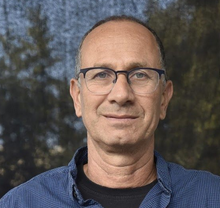
Israël Science Info a demandé au chercheur Ilan Katz du Technion de préciser les mérites comparés de cette nouvelle technologie face à la solution israélienne WaterGen : « Le refroidissement direct (DC) AMH de WaterGen présente deux inconvénients majeurs : une consommation d’énergie élevée pour refroidir toute la masse d’air (environ 100 fois la masse de la vapeur d’eau même lorsque l’humidité ambiante est élevée) et la forte dépendance de la production d’eau aux conditions atmosphériques. En particulier, lorsque l’humidité relative est inférieure à 50%, l’efficacité énergétique du procédé DC-AMH est très réduite.
Notre système de liquide déshydratant offre une alternative innovante pour résoudre ces inconvénients. Il extraie l’humidité de l’air plus efficacement que le processus de refroidissement. Le système LDS-AMH peut absorber une quantité (presque) illimitée d’humidité ambiante. Il relâche ensuite l’eau absorbée dans une chambre séparée maintenue à des conditions favorables pour régénérer le liquide déshydratant et libérer l’humidité sous forme de vapeur. Cette dernière est refroidie jusqu’à condensation. L’énergie n’est donc requise que pour refroidir la vapeur d’eau et la condenser, plutôt que pour l’interaction sensible du liquide refroidissant avec l’air.
Un autre avantage est que la collecte d’humidité à l’aide de notre solution déshydratante peut fournir de l’eau potable potable sans contaminants biologiques, chimiques ou physiques en suspension dans l’air. Au niveau secondaire du processus, le déshydratant hyper-salin sert également d’agent physique et biologique, de barrière active entre l’air capté et l’eau produite. Alors que dans le système de refroidissement direct, toutes les contaminations sont transmises à l’eau condensée, une filtration de l’air et une purification de l’eau sont donc nécessaires ».

Le Pr Broday souligne : « la principale différence est que WaterGen refroidit l’air pour condenser un faible pourcentage de vapeur d’eau alors que nous ne refroidissons que la vapeur d’eau en la retirant d’abord de l’air ambiant. Par conséquent, nous économisons de l’énergie ».
Un stress hydrique en 2025
Selon l’Organisation mondiale de la santé (OMS), environ la moitié de la population mondiale souffrira de pénuries d’eau potable dès 2025. Par conséquent, l’accès à l’eau potable, l’un des 17 objectifs de développement durable fixés par l’ONU en 2015, a motivé le développement au Technion de ce système de production d’eau autonome et portatif qui peut fournir de l’eau potable aux communautés situées loin des sources d’eau.
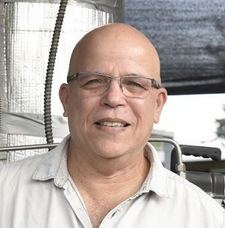
Pour le Pr Friedler, « les technologies existantes refroidissent tout l’air qui entre dans le système et condensent la vapeur d’eau, comme un climatiseur. Par conséquent, ces systèmes représentent un gaspillage d’énergie car ils refroidissent tout l’air alors que la vapeur d’eau ne représente environ que 3% de la masse d’air, même lorsque l’humidité relative est de 100%. »
Pas de compétition avec la désalinisation
« Nous ne sommes pas en compétition avec la désalinisation« , ajoute le Pr Brodai. « Israël est un pays développé situé sur un littoral qui peut fournir toute la consommation d’eau par les systèmes de dessalement. Cela est dû en partie au fait qu’il s’agit d’un pays relativement petit avec une large majorité de ses habitants vivant le long de la côte, de sorte qu’aucun transport d’eau dessalée à longue distance n’est nécessaire. Cependant, habiter loin de la mer coûtera cher et nécessitera un long pipeline de transport. Ce sont les avantages de la nouvelle technologie que nous avons développée ».

Les créateurs de cette nouvelle technologie sont le Pr David Broday et le Pr Eran Friedler, chercheurs au Département de génie civil et environnemental de la Faculté de génie civil et environnemental, et à l’Institut de recherche sur l’eau Stephen et Nancy Grand Technion, et Ilan Katz ingénieur en chef du système économie d’énergie. Cette technologie du Technion Technology Transfer – T3 innovante a été brevetée et des contacts ont été établis avec l’industrie pour le développement et la commercialisation.

Ben Gido, diplômé de la Faculté de génie civil et environnemental, a participé au développement du système, le Dr Khaled Gommed (arabe israélien) du Laboratoire d’énergie de la Faculté de génie mécanique, le Dr Yigal Evron de la Faculté de génie mécanique (dirigé par le Dr Khalid et le professeur émérite Gershon Grossman) pour le génie civil et environnemental.
Esther Amar pour Israël Science Info avec la participation de Célia Kagan, étudiante ingénieur à l’ESME Sudria (campus Paris)
https://www.youtube.com/watch?v=8fQRnM4-4W4&feature=youtu.be[:en]
Researchers at the Technion have developed a standalone system that produces water from the air, even in desert regions. The innovative system is capable of providing water to small and isolated communities, without the need to transport water for long distances.
According to estimates by the World Health Organization (WHO), about 13% of the world’s population will suffer from insufficient availability of drinking water by 2025. For this reason, access to freshwater is one of the 17 Sustainable Development Goals (SDGs) adopted by the United Nations in 2015. This goal was the motivation for developing a standalone system for producing water from the air.
»Besides being energy efficient, the new technology offers an additional advantage: as part of the process the water undergoes also pollutant removal processes,” said Prof. Broday. “Our technology turns water into a commodity as it enables water to be produced anywhere in the world, without being dependent upon existing sources of liquid water. The prototype we have built demonstrates that the system works as expected and we currently work toward turning it into a commercial product. »
»Existing technologies work simply as “reverse” air conditioners, by cooling the whole air mass entering the system in order to condense the moisture,” said Prof. Friedler. “This ‘direct cooling’ approach is energetically inefficient, since such systems waste much of their energy requirements on cooling about 97% of the air volume, which is non-condensable. The new technology involves cooling of only the moisture that has been extracted from the air, significantly reducing the amount of energy required to produce water.”
»We are not competing with desalination, » explained Prof. Broday. « Israel is a developed nation situated near the sea and can supply all its water needs through desalination systems. Among other reasons, this is because Israel is a relatively small country and a significant portion of the population lives along the coast, such that water does not need to be transported over long distances. In contrast, transporting desalinated water to communities situated far from the coast is very expensive due to the need for extremely long pipelines. Herein lies the advantages of the new technology. » The system is particularly relevant for small and isolated communities that are located far from fresh- or salty- water sources, as it can produce water where it is most needed.
According to Prof. Friedler, « in addition to being an essential component of life, water also influences other important aspects, among them individual and community health and even the empowerment of women. In many places, young girls do not attend school because they are busy providing water for the family. Even as adults, women devote hours to transporting water. Furthermore, access to water is a central factor in bloody confrontations in arid regions nowadays and constitutes one of the foremost motives for immigration. In such conflict zones, the risk of children dying from polluted water is 20 times higher than dying due to violent acts ».
Interview by Israel Science Info:

Direct cooling (DC) AMH, like WaterGen, has two main drawbacks: high energy consumption due to the need to cool the entire air mass (about 100 times the mass of the water vapor even when the relative humidity is high), and the strong dependence of the water production on atmospheric conditions. In particular, when the relative humidity is less than 50%, the energy efficiency of the DC-AMH process is significantly reduced. Our Liquid Desiccant (LDS-AMH) system provides an innovative alternative that copes with these disadvantages by means of extracting the humidity from the air before the cooling process. Namely, the LDS-AMH system can absorb an (almost) unlimited amount of ambient moisture into the liquid desiccant, and later release the absorbed water in a separate chamber that is maintained at favorable conditions for the liquid desiccant regeneration and the humidity release as steam. Accordingly, since only the water vapor is cooled until it condenses, energy is required only for removing the latent heat of the condensation (rather than also for the sensible heat interaction of the air).
Another advantage of our technology is that Moisture harvesting using the liquid desiccant technology can provide safe drinking water without biological, chemical or physical airborne contaminants, since as a “side effect” of the process the hyper-saline desiccant serves also as a physical and bio-active barrier between the bulk air and the produced water. (In direct cooling technology all contaminations are passed to the condensed water, therefore air filtration and water purification are required).
« In general the main difference is that watergen cools the air mass to condence few oercent of water vapor whereas we cool only the water vapor by first stripping them from the bulk air. Hence we save energy », says David Broday.
———————

The technology was developed by Professor David Broday and Professor Eran Friedler from the Environmental, Water and Agricultural Engineering Division of the Technion Faculty of Civil and Environmental Engineering, and the Stephen and Nancy Grand Water Research Institute (GWRI).

It is the first technology of its kind in the world: an energy-efficient system for producing clean water from the air. Unlike the existing technology, the Technion researchers’ system is based on a two-stage cyclic process: separation of moisture from the air by absorption using a highly concentrated saline solution, and separation of the moisture from the desiccant under and condensing the vapor under sub-atmospheric pressure conditions.

